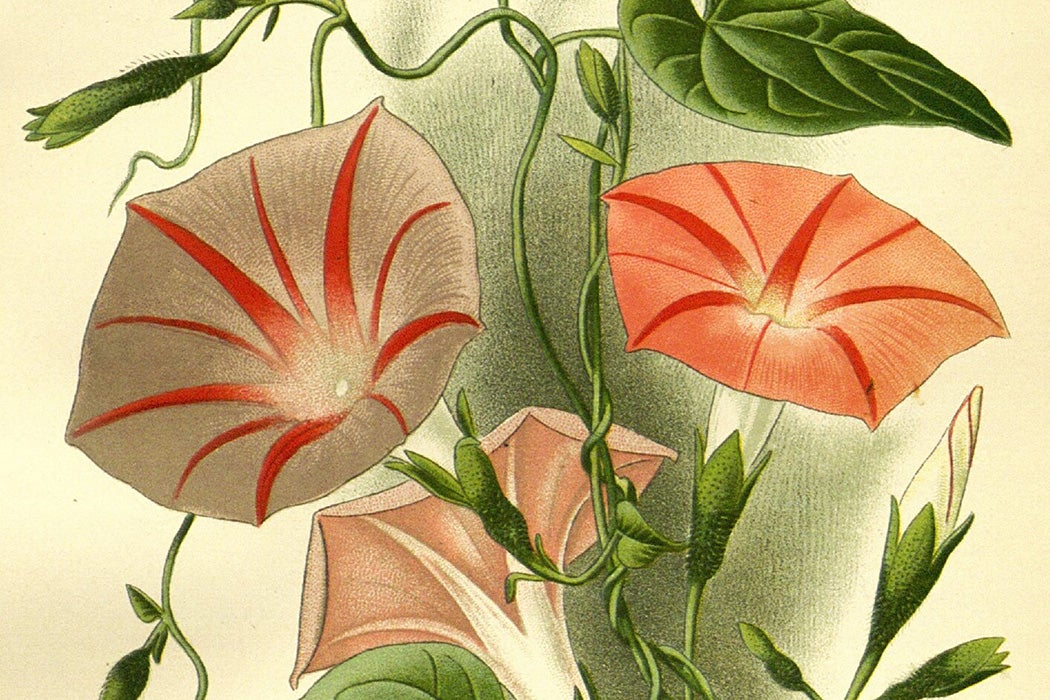Many Americans celebrate Valentine’s Day with foods like chocolate, strawberries, and oysters that supposedly have the power to ignite love and sexual desire. Ethnobotanist Jan G. R. Elferink writes that the Aztec and Inca empires had aphrodisiacs too.
Elfernick explains that the interest of the Aztecs and Incas in aphrodisiacs was related to the high value both societies put on fertility. Their empires needed soldiers, which made large families a source of pride. Although they had strict rules around sex, including prohibitions on adultery and same-sex relations, both cultures had gods associated with sexuality. For example, the Aztec goddess Tlazolteotl was associated with both the promotion of lust and the punishment of sexual sins.
Aztecs attributed aphrodisiac properties to many plant-based foods, including the chocolate beverage atextli. Elferink notes that this probably wasn’t just about the chocolate since there were other cocoa-based beverages that had no association with sex. Likewise, Spanish observers noted that Aztecs attributed aphrodisiac qualities to just one of the many types of peanuts they ate.
Other Aztec aphrodisiacs were medicines with psychoactive properties, including the morning glory and certain mushrooms. One kind of mushroom, teonanácatl (now known as pajarito in Spanish) was associated with prostitutes, though it’s unclear whether they or their clients consumed it, or what the specific desired effects were. A plant known as cutiriqui was used not just for whetting sexual appetites but for rekindling the love of a married couple.
However, Elferink writes, the most potent aphrodisiacs for the Aztecs seem to have come from animals. A part of the mazacoatl, or deersnake, was considered extremely potent, to the point of danger. The Florentine Codex, written by Spanish Franciscan friar Bernardino de Sahagún in the sixteenth century, warned that a man who drank too much of a tincture made from mazacoatl “continually erects his virile member and constantly ejects his semen, and dies of lasciviousness.” Also dangerous was the temolin, a large beetle, which may have contained cantharidin, the same toxin found in the notorious “Spanish fly.”
Weekly Newsletter
Elferink explains that the Spanish compiled less extensive information about Inca aphrodisiacs, but that culture clearly also used a number of plant and animal products to promote love and desire. For instance, chilis normally used to flavor food were understood to have aphrodisiac qualities when used in large amounts. Other Inca aphrodisiacs included certain insect larvae, as well as the yanta-yanta bird, which, like the Aztecs’ temolin, was highly toxic and extremely dangerous.
Incas viewed several medicinal plants as having two forms. The male form excited sexual desire while the female form reversed this effect. In fact, along with aphrodisiacs, both Aztecs and Inca had anaphrodisiacs, which could allegedly extinguish sexual desire. Among other uses, Inca rulers fed one such tuber to soldiers to encourage them to forget their wives while off at war.
So, whether you have a big Valentine’s Day date or would prefer to ignore the holiday entirely, Mesoamerican practices might offer inspiration.
Support JSTOR Daily! Join our new membership program on Patreon today.







